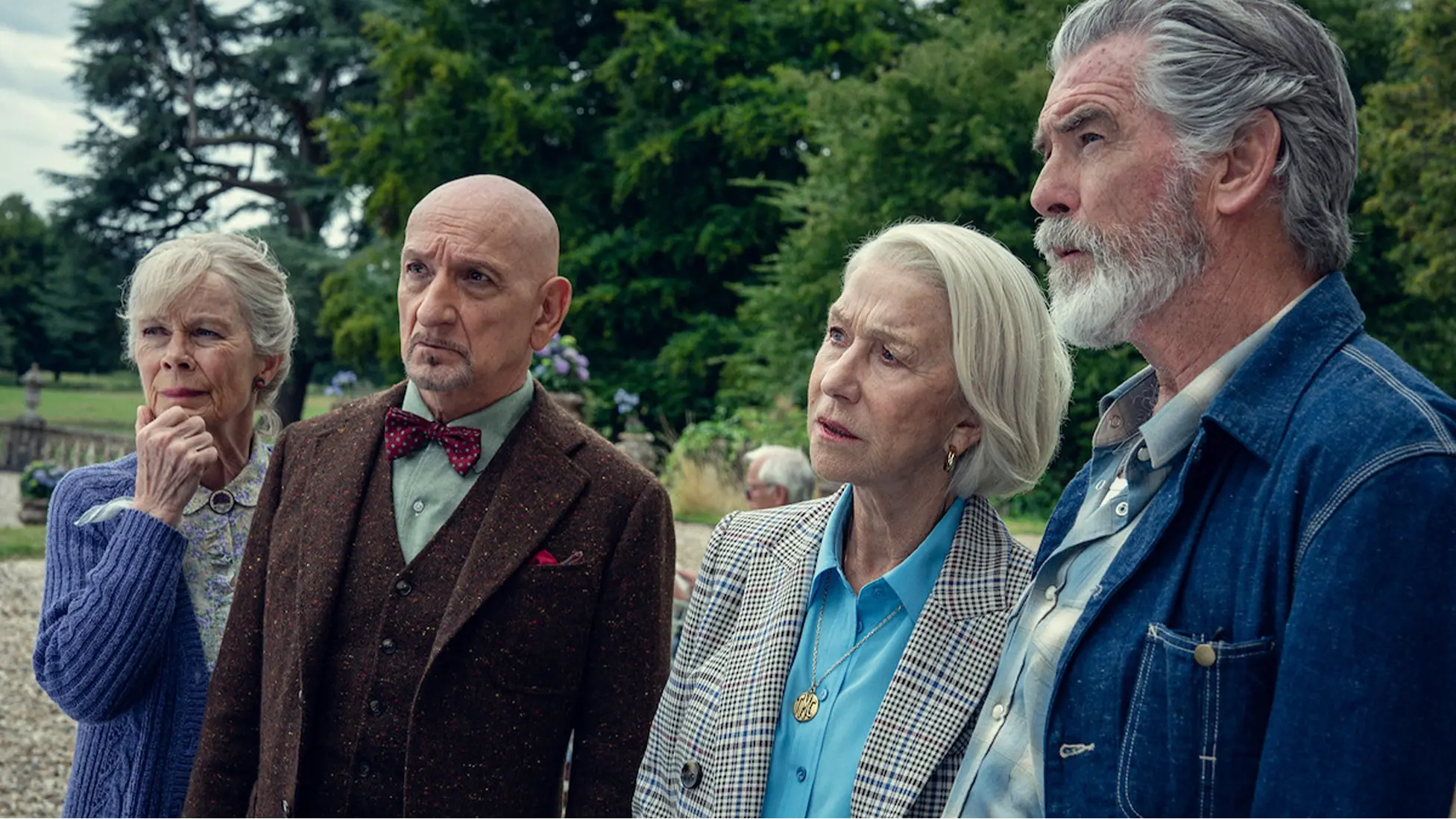The Thursday Murder Club lands its ending by answering who killed Tony Curran and Ian Ventham and by deciding the fate of Coopers Chase. The Thursday Murder Club is set in a retirement community where Elizabeth, Ron, Ibrahim, and Joyce meet weekly to study cold cases. The film is directed by Chris Columbus and stars Helen Mirren, Pierce Brosnan, Ben Kingsley, and Celia Imrie, with Jonathan Pryce, David Tennant, Henry Lloyd-Hughes, Naomi Ackie, Geoff Bell, and Richard E. Grant.
The Thursday Murder Club begins with a 1970s case involving Angela Hughes. It escalates when developer Ian pushes to expand Coopers Chase and Tony turns up dead. The Thursday Murder Club follows the trail through a protest, a collapse in public, a graveyard dig, and a florist called Thorny Blooms.
By the end, Elizabeth forces a legal turn: the surviving co-owner sells Coopers Chase to Joyce’s daughter, keeping the place in friendly hands. The Thursday Murder Club closes the loop on both murders and protects the residents’ home.
Who actually owns Coopers Chase, and why that reveal decides the ending in The Thursday Murder Club
The late-film twist is ownership. Elizabeth and Donna trace a pattern of flower cards to Thorny Blooms and confront Bobby Tanner. He is the long-missing third co-owner of Coopers Chase. He also admits that the partners imported workers and seized their passports. This gives Elizabeth leverage. She pushes Bobby to sell to a buyer she names.
That buyer is Joanna, Joyce’s financier daughter, who keeps Coopers Chase close to the community and ends the speculative push. Ron remarked,
“stinks like a rat up a drain pipe.”
It's a line that frames how the club reads the deal behind the crimes. The Thursday Murder Club uses the ownership reveal to settle the land fight without a courtroom scene. It is a negotiation built on proof, pressure, and timing rather than a last-second chase.
How the cemetery discovery turns a land deal into a murder spiral
The graves become the hinge. Ian orders groundworks at the Coopers Chase cemetery. Bogdan finds bones lying on top of a coffin. Tests identify Peter Mercer, the boyfriend in the old Angela Hughes case.
Elizabeth realizes Penny Gray had buried Peter years ago after learning he had killed Angela and got away with it. John Gray helped Penny and then kept her secret as she declined. When Ian’s dig risked exposing the grave, John used fentanyl to kill him. Bogdan also confesses to Tony’s death during a chess game with Stephen.
It was a struggle for his passport that turned fatal. Stephen’s recordings capture that confession. Ibrahim stated at the funeral,
“Sometimes, good people do bad things. But what John did, he did for love. For the love of Penny. And their enduring love will span time and space, dancing into the stars together. We shall miss them, and we shall remember them always..”
The Thursday Murder Club maps each act to motive: love and protection for John and Penny, freedom and fear for Bogdan, and profit and pressure for the developers.
So what is the final status of Coopers Chase?
Elizabeth grants Bobby an exit if he sells to her choice. He agrees. Joanna takes over Coopers Chase. The planned expansion is paused. Residents keep their homes. The film ends with quiet codas: Elizabeth and Stephen share an anniversary dinner, Ron and Jason reconcile during a match on TV, and Joyce and Ibrahim look back through photos. Ron mandated at Joyce’s induction,
“Always bring cake.”
The Thursday Murder Club uses those closing beats to show continuity. The club is intact. The case is closed. The place they live is safe under new ownership. The Thursday Murder Club can return to their table in the jigsaw room and wait for the next file.
In practical terms, the sale resets the village’s day-to-day rhythm. The redevelopment files that drove the conflict are closed out, and any future building talk moves to a slower, resident-first track with formal check-ins. The management is now near enough to listen, which lowers the temperature on disputes that once flared in corridors and committee rooms.
Police involvement narrows to routine liaison rather than crisis calls. The cemetery stays undisturbed, preserving the place’s history alongside its homes. Nothing on screen suggests fee shocks or sudden upheaval. The signal is continuity with clearer oversight.
The Thursday Murder Club returns to ordinary mornings and shared tables, which is the point: the case ends, the community keeps breathing.
Stay tuned for more updates.
 Joyce, Ibrahim, Elizabeth, and Ron at Coopers Chase in The Thursday Murder Club | Image via Netflix
Joyce, Ibrahim, Elizabeth, and Ron at Coopers Chase in The Thursday Murder Club | Image via Netflix